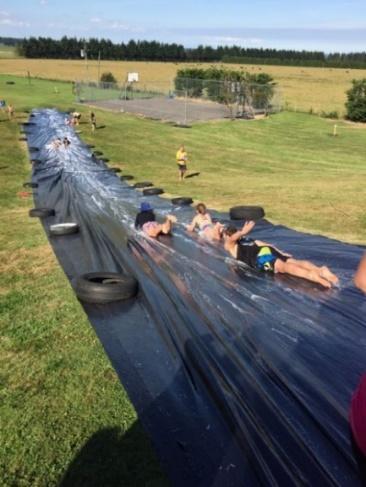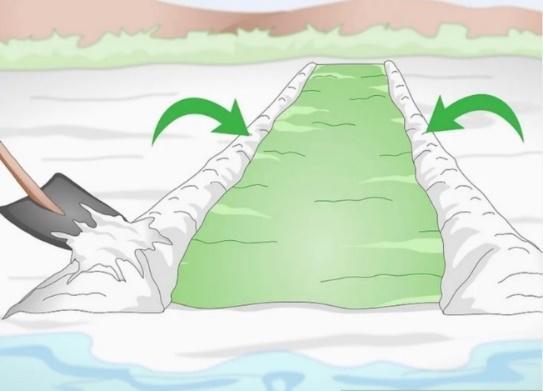
Scouting Ireland, National Office, Larch Hill, Dublin 16, Ireland. T:
Slip-n-SlideAdvice Document
The Slip-n-Slide is a classic activity for scout groups during the warm summer months. Whilst this is an enjoyable and popular activity, it comes with a risk. Slip-n-Slides have the potential to cause major harm to its users IF NOT RISKASSESSED OR SET UP INCORRECTLY.
Setting up a Slip-n-Slide
When setting up a Slip-n-Slide, many groups secure the tarpaulin with pegs to prevent it from shifting during use. However, using metal tent pegs poses a serious risk of lacerations to participants. To minimise this hazard, consider safer alternatives for securing the tarpaulin and always complete a risk assessment before the activity.
Equally important is checking the ground thoroughly before set-up. Hidden metal pegs left behind by previous groups can cause severe injuries if a participant slides over them. Take time to inspect the area carefully and remove any hazards before use.
Option 1: Old Tyres
The weight of the tyres will hold the tarpaulin while being light enough that if a participant slides into it, the tyre will move. Tyres can be placed in the corners of the tarpaulin or can be placed along the side of the slide as shown in the image to the right.
Option 2: Sandbags
Option2involvesusingsandbagsinthesamewayasthetyreswithin option 1. However, depending on the weight of the sandbag, they may be less likely to move on impact and thus may cause some bruising.


Option 3: Pool Noodles
Option 3 shows a temporary solution to secure your waterslide though using Pool Noodles/ Foam sticks and duct tape to secure the waterslide. This option provides a softer impact if participants slide into the edges of the slide.


Option 4: Bury the edges
This option can only be used if the slip-n-slide is going to be a permanent structure. Use Sand or Soil to Bury the edges of your tarpaulin.

Option 5: Flat Plastic Ground Sheet Pegs
These pegs will stay flat and reduce the risk of injury. Additionally, these plastic pegs are more likely to break causing a smaller injury to the participant. Please note. To ensure this option is set up correctly, ensure all pegs are flat and pushed into the ground as far as possible.

